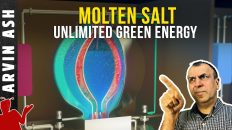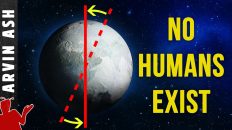Thank you to Wondrium for sponsoring today’s video! Signup for your FREE trial to Wondrium here: http://ow.ly/9gqi50KwWY8
SUMMARY:
Something heavy seems to be causing Uranus and Neptune to move in a different orbit than what we can currently account for with the celestial objects we know of. Is there a 9th planet? Does planet 9 exist? Is planet X real? What might it look like? And how did it get so far out in space?
We have been looking for planet 9 for a long time but haven’t found anything after decades of searching. Why haven’t we seen anything? There are a few reasons. 1) maybe there is no planet 9, and the reason for the orbital anomalies is due to a problem with our mathematical models. 2) Harvard astronomers suggest that it may be a primordial black hole the size of a grapefruit. This would have the approximate mass of Neptune. 3) And there are scientists who think that we have poor data or are misinterpreting the data, and that the idea of a 9th planet is silly.
But there are some compelling reasons why planet nine is thought to exist. It is not just that it would have an effect on Uranus and Neptune, but also on other distant celestial objects in our solar system. These objects are known as Trans-Neptunian objects, or TNOs, meaning objects orbiting beyond Neptune. Observations suggests that these TNOs are also not orbiting as expected. They all tend to cluster together in their approach to the sun and their orbits are similarly tilted.
In 2016, Caltech astronomers Mike Brown and Konstantin Batygin proposed that a large 9th planet, four to ten times more massive than the earth, orbiting 360-620 times farther away from the sun than earth, could explain the similar orbits of at many of these TNOs.
This 9th planet would be extremely far away. When an object is so far away, very few photons from the sun reach it, and even fewer photons are reflected back to earth for us to detect.
Now if this planet exists, the question is how did it get there? Brown and Batygin proposed that it formed closer to the sun like the other large planets of our solar system, but was ejected into an eccentric orbit after a close encounter with Jupiter or Saturn close to the time of the formation of the solar system. Supercomputer simulations seem to suggest that this is a realistic possibility.
Others have proposed that this planet was captured from another star during a close encounter with another solar system billions of years ago. Some suggest that planet 9 was once a rogue planet wandering in the Milky Way galaxy and was captured by our Sun’s gravity.
Could it have formed organically at its current orbit? This could have happened if the protoplanetary disk that formed our solar system was more massive and more extensive that we realize.
Planet 9 would be about 600 times fainter than Pluto. Furthermore, planet 9 would take 10,000 to 20,000 years to make a full orbit around the sun.
There are three possibilities for what it could look like. First it could be a rocky planet like the earth, but up to ten times more massive. A second possibility is planet 9 formed from ice in the outer solar system. The interesting fact if this is true is that an ice world that big would have an internal ocean of liquid water, similar to the how Europa, one of Jupiter’s moons has an internal ocean beneath the ice. Or it could be a gas giant, having formed in the gas rich part of the solar system, just like Jupiter, Saturn, Uranus and Neptune. It could be a mini Neptune, with a rock core, and a very thick atmosphere.
#planet9
It’s atmosphere could be transparent such that it reflects very little light. This is possible because with almost no energy coming from the sun which would just look like a bright star at this distance, it would be extremely cold, only around 47 degrees above absolute zero. At these temperatures, all the heavier molecules in the atmosphere would drop to the surface, leaving only the lightest molecules remaining in the atmosphere, like hydrogen and helium, making it translucent.







